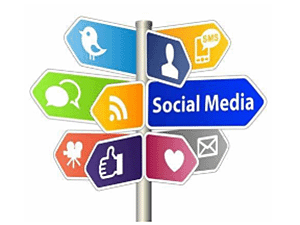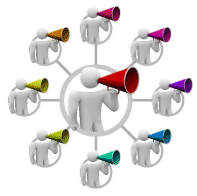Contact
caroline.grabbe@slu.se, +46 (0)90 786 8389, +46 (0)72 236 56 70
fiona.reid@slu.se, +46 18 67 3242, +46 72 2288689

Communication and dissemination are critical to ensure that your research reaches the right audience and makes an impact. Independent of whether you are focused on fundamental research questions or work closely with stakeholders, you need a thorough plan to successfully spread the results of your research to the appropriate scientific community, the stakeholder groups who will benefit from them, or the wider society.
Since communication, dissemination and impact go hand in hand, many funders require that you include an initial communication and dissemination plan at the proposal stage. Hence, to be successful, you must show that you have not only a convincing plan for your research, but also an effective strategy for communicating and disseminating the new knowledge and achieving impact. Indeed, some funders may also request that you communicate and engage with your envisioned target groups during the design of your project plan. This ensures that the research matches their real-world challenges and needs - a concept known as co-creation of research.
Some funders make a distinction between the terms communication and dissemination. Where they do, it is important not to use them interchangeably and to have an understanding of the differences.
Communication
Dissemination
To keep things simple, for the remainder of this guide, we will only use the term communication - but you should understand that our advice is relevant to both communication and dissemination plans.
When building an effective and convincing communication and dissemination plan, there are several key aspects that you need to consider. These include defining WHY you need to communicate, to WHOM, WHEN, and HOW. In addition, you need to present an activity plan that outlines WHAT you will do- the major activities that you will carry out to ensure that the results and other information about your research project will reach the appropriate audience and realise the anticipated impact.
1. Background and aim
Before starting to plan your activities, you need to define the aim of the communication and dissemination - why you need to communicate and what you aim to achieve with the activities. Sometimes you may simply wish to spread information and new knowledge to relevant target groups, but in many cases, communication strives to affect the target groups in various ways, maybe by altering attitudes, behaviours or evoking emotions. For a funder to understand what your communication and dissemination will support, you often also have to provide background information on why an altered attitude or behaviour in a particular group would be favourable – for example to promote the sustainable development goals and mitigate climate change.

2. Target groups
After defining your aims, you need to pinpoint your key target group or groups. Depending on the focus of your research project, different groups will, or will not, be interested in or affected by your research. Hence, before planning any communication/dissemination activities, you have to consider who may be interested in, affected by, or benefit from your research, and thereby determine who you need to target. Once you have identified a target group, it is important to consider what kind of information this group may be interested in and educate yourself about how this group prefers to interact with researchers. To ensure efficient communication, it’s often wise to interact with your intended target group and co-create activities that are suitable for achieving the project’s communication/dissemination aims. It is crucial to be aware that different target groups may be interested in different aspects of your research and that they also may prefer different channels for communication.
Remember that you may not be able to reach out to everyone! Make sure your plan is realistic in relation to the size of your project and the resources that are available. However, in most cases it’s a good idea to plan for one or a few activities that are targeting a wider audience or the general public.
3. Key messages
When reaching out to a specific target group, you should focus on delivering the information that is relevant for that particular audience. Even if many aspects of your research are interesting, your main message may be lost if you overwhelm the listener with too much information. Therefore, it is often wise to spend some time formulating key messages for each target audience, focusing on the main points and narrowing down your messages to be as clear, strong and concise as possible. Use visuals when you communicate – figures, pictures, graphs, animations, videos – a visual can say more than a thousand words!
4. Channels
 There is a myriad of different ways in which you can communicate - written, orally, via video, web sites, events or social media, to mention a few. This provides a multitude of opportunities for communication, but also a risk that your messages may have difficulties reaching their intended audience. Thus, when choosing a channel for communication or dissemination, you need to be strategic and select both the best way and the optimal time for your activities. To achieve a successful communication, it is often advantageous to discuss and plan communication activities together with each target group. It is good to choose a mix of channels, in which the information is provided in different ways, appealing to different types of listeners. Moreover, when selecting channels, it is important to consider if your communication will require certain preparations such as special equipment, time for training, advertising etc. A few examples of communication and dissemination channels include:
There is a myriad of different ways in which you can communicate - written, orally, via video, web sites, events or social media, to mention a few. This provides a multitude of opportunities for communication, but also a risk that your messages may have difficulties reaching their intended audience. Thus, when choosing a channel for communication or dissemination, you need to be strategic and select both the best way and the optimal time for your activities. To achieve a successful communication, it is often advantageous to discuss and plan communication activities together with each target group. It is good to choose a mix of channels, in which the information is provided in different ways, appealing to different types of listeners. Moreover, when selecting channels, it is important to consider if your communication will require certain preparations such as special equipment, time for training, advertising etc. A few examples of communication and dissemination channels include:
5. Activity planning
Once you have defined your aims, target groups, key messages and communication/dissemination channels, you are ready to make an activity plan for how to communicate information about your research project or disseminate results. In an activity plan, you outline all activities in a readily accessible way, depicting WHAT you will do (activity), WHY (aim), for WHOM (target group), HOW (channel), and WHEN (timing). If possible, also include who will be responsible for ensuring that the activity is realised and how you will measure or evaluate the activity (see below).

A clear and concise activity plan will provide both you and the funder with a good overview of the activities, and simultaneously facilitate follow-up and evaluation of the communication.
6. Evaluation
A critical part of a communication and dissemination plan, which is often overlooked, is an appropriate follow-up of the activities. If you do not properly evaluate the outcome of your activities, you cannot know whether you have successfully achieved your aims. Therefore, already at the proposal stage, it is advantageous to define how you intend to evaluate your communication and dissemination activities, most commonly through the use of key performance indicators or KPIs. For conferences/meetings/events you may wish to monitor the number of participants, for websites and social media, the number of visits may be relevant, whereas for other activities a survey or discussions in focus groups may be preferable. Providing information about your strategy to evaluate your activities will not only show the funder that you take communication and dissemination seriously, but will also help you to continuously improve the measures you take.
7. Other aspects to consider
When planning the communication and dissemination of project-related information and results, you may also need to consider a few other aspects, including:
Finally, when designing a communication and dissemination plan for your research project, remember to be honest and realistic, and adjust the activities according to your needs, experiences and available resources. Communication and dissemination takes time, so prioritise, be strategic, and be selective. Furthermore, if you are inexperienced, do not hesitate to ask for help and advice - from senior peers, professional communicators or your friends!
Communicating your project - Horizon 2020 Online Manual
Dissemination and exploitation of project results - Horizon 2020 Online Manual
Communicating EU research and innovation: guidance for project participants
Quick guide and tools for Communication, Dissemination and Exploitation in Horizon 2020
Support to address the criterion for communication – Formas' annual open call
caroline.grabbe@slu.se, +46 (0)90 786 8389, +46 (0)72 236 56 70
fiona.reid@slu.se, +46 18 67 3242, +46 72 2288689